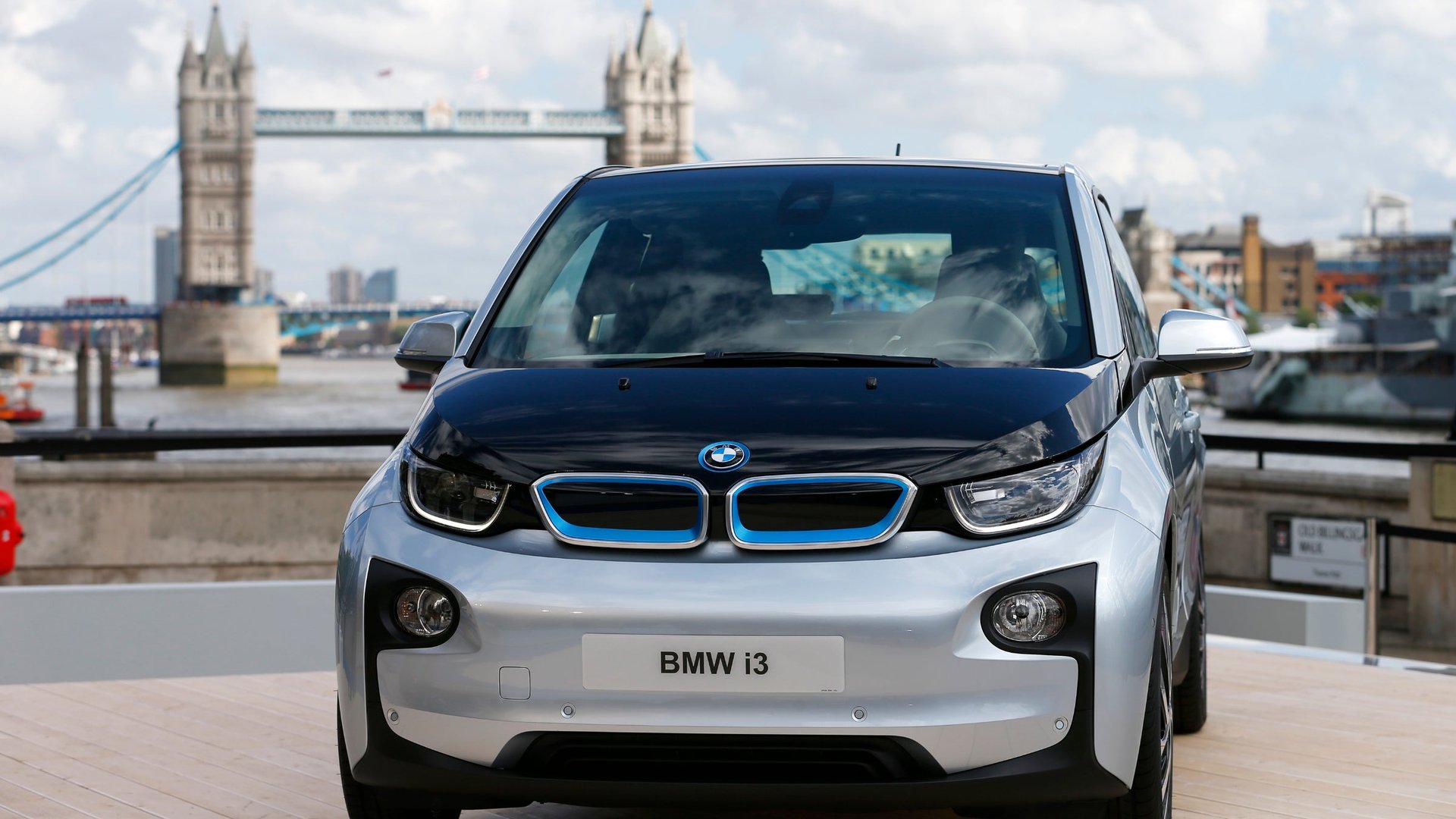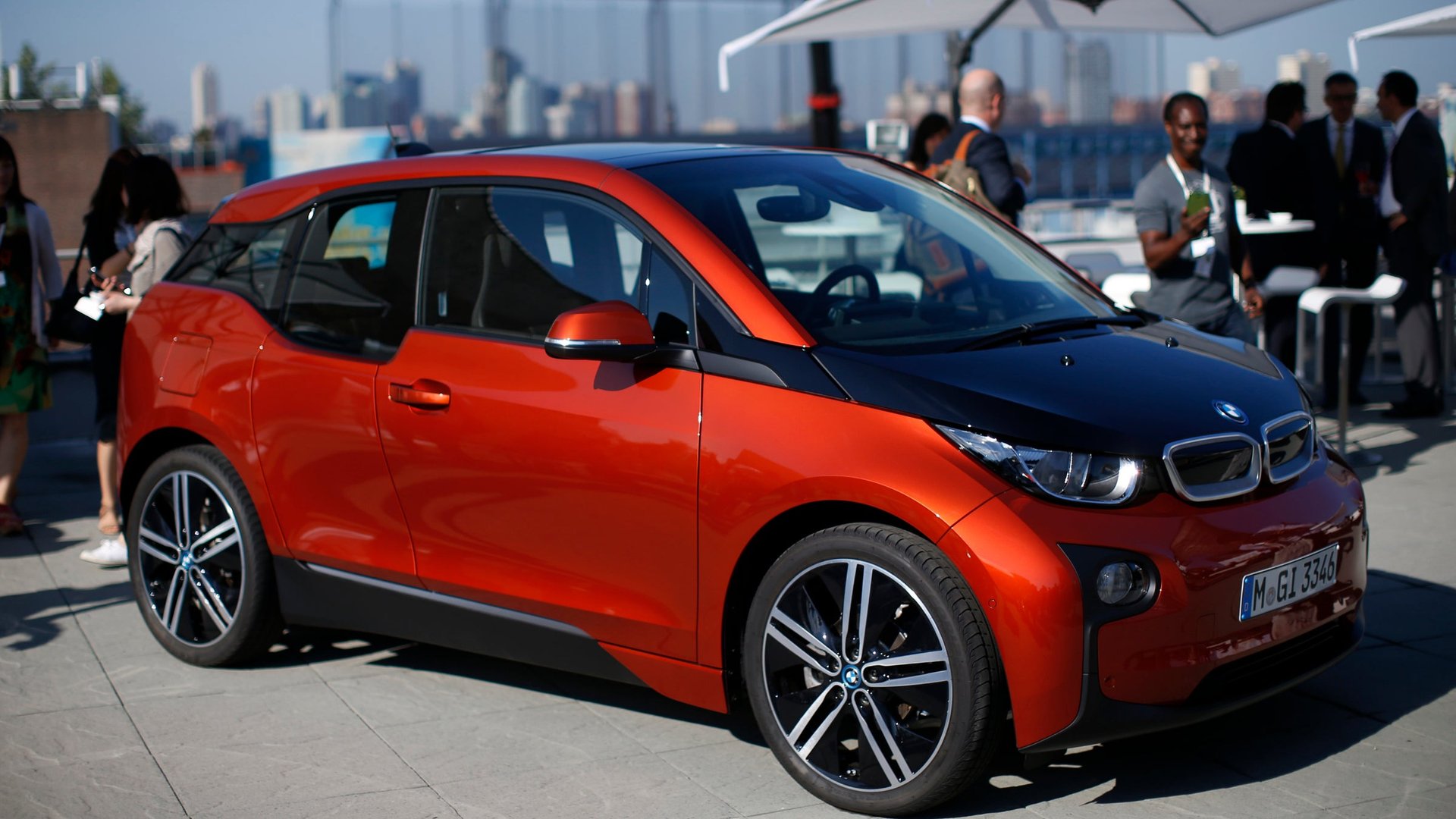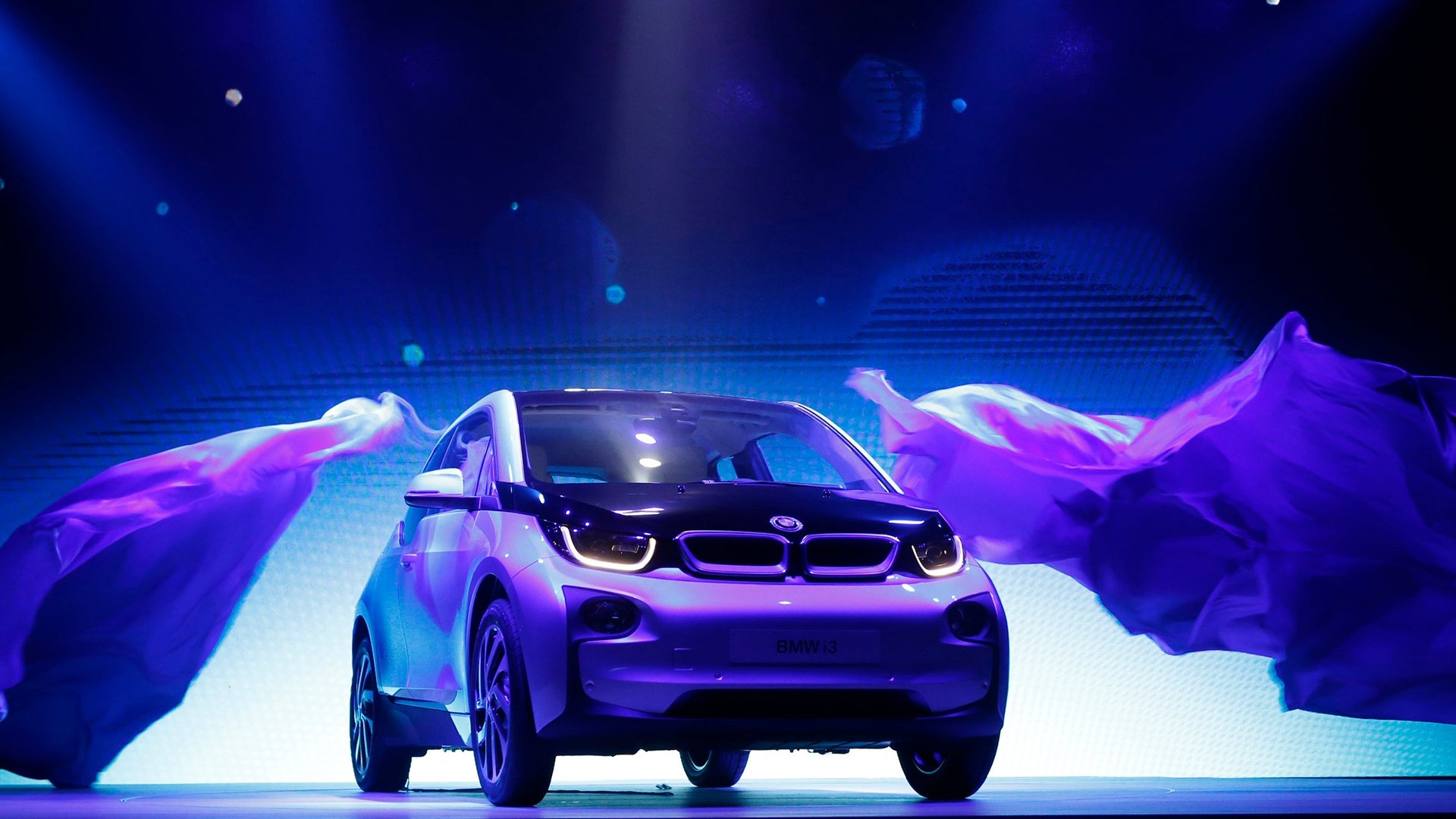BMW wants its i3 to convert non-electric car fans into believers
With its first all-electric car, the i3, BMW seems to be gunning for a new type of electric car customer: people who don’t like electrics. The German carmaker still wants to attract the environmentally conscious consumer, but it’s also hoping to appeal to conventional car customers who have bristled at the high price and low performance of existing electric car models. BMW’s solution has been to design a lower-priced electric vehicle with novel perks that compensate for weaker performance compared with gas-powered cars. Here are some examples of the new approach of the i3, which launches later this year:

With its first all-electric car, the i3, BMW seems to be gunning for a new type of electric car customer: people who don’t like electrics. The German carmaker still wants to attract the environmentally conscious consumer, but it’s also hoping to appeal to conventional car customers who have bristled at the high price and low performance of existing electric car models. BMW’s solution has been to design a lower-priced electric vehicle with novel perks that compensate for weaker performance compared with gas-powered cars. Here are some examples of the new approach of the i3, which launches later this year:
1. The i3 is a city car.

With a range of 80-100 miles, the base version of the i3 is targeted at drivers based in urban or suburban areas, but the car is loaded with features that appeal to city dwellers. For example, the car does not have a transmission tunnel bisecting the cabin, which makes it easier for drivers to exit from either door—a feature that helps urban dwellers navigate tight squeezes in city parking lots.
Another urban-focused feature: BMW claims that i3 goes from 0 to 60 miles per hour is 7.0 seconds, but its top speed is electronically limited to 90 mph. That suggests the engine is geared more toward beating red city lights, not racing down expressways.
2. The i3 more eco-friendly than usual.

Unlike most electric vehicles that are models converted from conventional designs, the i3 was designed from scratch to be electric, which boosts its efficiency. That’s a departure from BMW’s electric competitors as well as its own previous models like the Mini E and the ActiveE. Thanks to its lightweight carbon fiber body and a chassis made of aluminum, the i3 will be one of the lightest electric vehicles in the market at around 2,700 lbs (1,224 kg).
The interior also boasts an eco-friendly design, with sustainably harvested wood, recycled plastics and the use of natural materials like hemp fibers in door panels. The exterior of the car speaks to its futuristic personality. It retains some classic BMW characteristics: kidney bean front grills, the square corners and the rear pillars. But the tall hatchback’s two full front doors and two rear half doors have critics calling it the strangest-looking car from the BMW stable since the three-wheeled Isetta in the 1950s.
3. BMW is catering to electric car-phobes.

To ease the “range anxiety” that puts off many potential electric car buyers, BMW has announced a clever offer: i3 buyers will have the option of renting conventional SUVs to use several weeks each year for family trips or as a backup.
To reach more reluctant customers, the company is also redesigning its sales network, selling the i3 through dedicated websites, and deploying a “mobile sales force” to make house calls and offer test drives.
4. The i3 out-prices its competitors.

BMW is abandoning its elite position to market the i3. With a base price of $41,350 in the US, and €34,950 ($46,000) in Germany, the i3 targets the underserved middle market. Nissan’s Leaf occupies the lower end of the electric car market, while Tesla dominates the higher end, leaving GM’s struggling Volt as the only real competition for the i3.